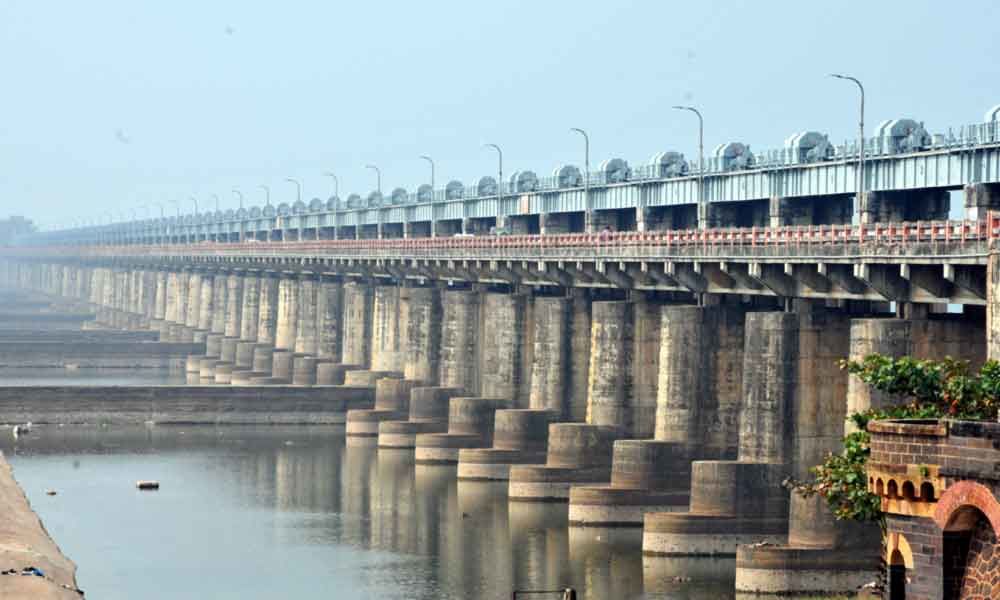
Rajamahendravaram: General Sir Arthur Thomas Cotton, a British military engineer doesn’t need any introduction in India mainly in South India as well as in the delta area of East and West Godavari districts. He is an architect and designer of many barrages across various rivers in India.
Even though he is a British military engineer, until his last breath, he always used to think on how to improve the irrigation system in India. He made the delta area in East Godavari district as ‘Rice Bowl of South India’ by constructing a barrage on river Godavari at Dowleswaram and saved the lives of lakhs of people by giving them a new lease of life.
On account of his relentless efforts, till today, many in the delta area offers ‘Tarpanam’ every day saying that “Nitya Godavari Snana Punyado-Yo Mahamathihi Smara Angleya Deseeyam Smarami Angleya-Katam Tam Bhagiradham” with due respects though he left the country even after 160 years, for boosting up their lives with the barrage.
The Sir Arthur Thomas Cotton Barrage at Dowleshwaram is an engineering marvel among other barrages constructed on various rivers.
The British government accorded permission for the construction of the barrage in the year 1844 and asked Arthur Cotton to shift to Dowleshwaram and at that time who was busy in constructing port at Visakhapatnam.
He started the construction of the barrage in the year 1847 and completed it in the year 1852 with a great difficulty as the British government did not sanction sufficient staff and funds.
Cotton asked the British government to allot six engineers, eight junior engineers and 2,000 masons, but the government sanctioned only one engineer and two junior engineers.
An amount of Rs 12.50 lakh was spent for the construction of the barrage and of the total amount he spent for barrage Rs 5 lakh, river bunds Rs 1 lakh, canals Rs 2 lakh, drains Rs 1 lakh, locks Rs 1 lakh and roads and bridges Rs 2 lakh.
Along with the barrage he also constructed 270 km length of canals and as many as 3.65 lakh acres of land was brought under cultivation. He surveyed the entire Godavari area between Papikondalu and Dowleshwaram to find out suitable place for the construction of the barrage, velocity of Godavari water, depth of the river in a span of eight months riding on a horse for 10 miles per day taking bananas as food.
Before the year 1843, the two Godavari districts suffered with serious drought and many lost their lives and in the same year, the British Government has sent senior official Sir Henry Mountiga Mari to study the drought conditions.
Henry Mountiga and Sir Arthur Thomas Cotton, submitted a report stating that construction of a barrage is inevitable to save the lives of the people and to increase income to the government. Finally, after studying the report the government gave permission for the construction of a barrage.
As many as 10,000 workers including from West Bengal worked in the construction work and Cotton imported heavy machinery from London in this regard.
During the construction of the barrage, Cotton with his family lived in a hut behind delta club for some days and later shifted his residence to Sapper hills at Bommuru. He left for London in the year 1860. Arthur Cotton was born as the tenth child to Henry Calvely couple on May 15, 1803 and died on July 24th, 1899.
ఇవి కూడా ఓ లుక్కేయండి ..
- Take stringent action against police for Majji’s suicide: TDP
- BJP to step up offensive against Jagan govt?
- East Godavari parents worried over TPR as schools set to open on August 16
- Passenger amenities inspected at Vijayawada, Rajamahendravaram railway stations
- This Independence Day, O2O optical chain MyValueVision.com is launching a 24×7 eye care on …
- SC Rly CCM inspects Vijayawada railway station
